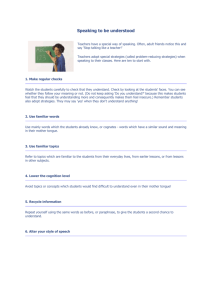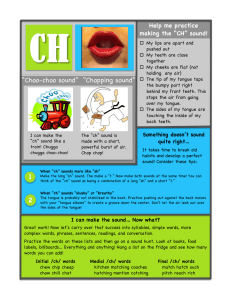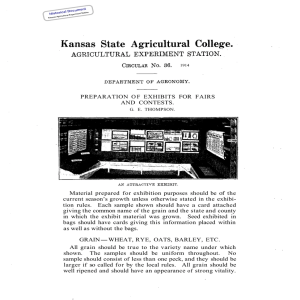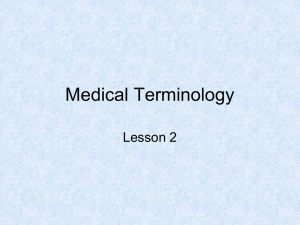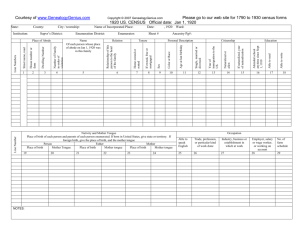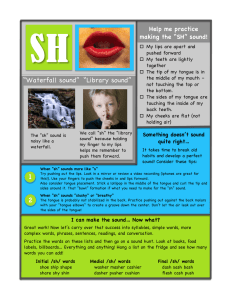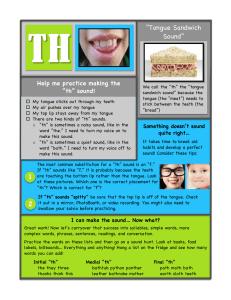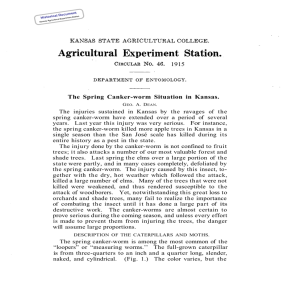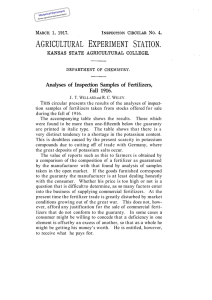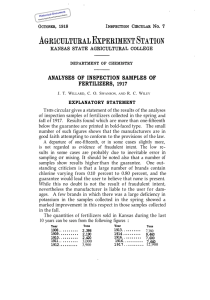Kansas State Agricultural College AGRICULTURAL EXPERIMENT STATION
advertisement
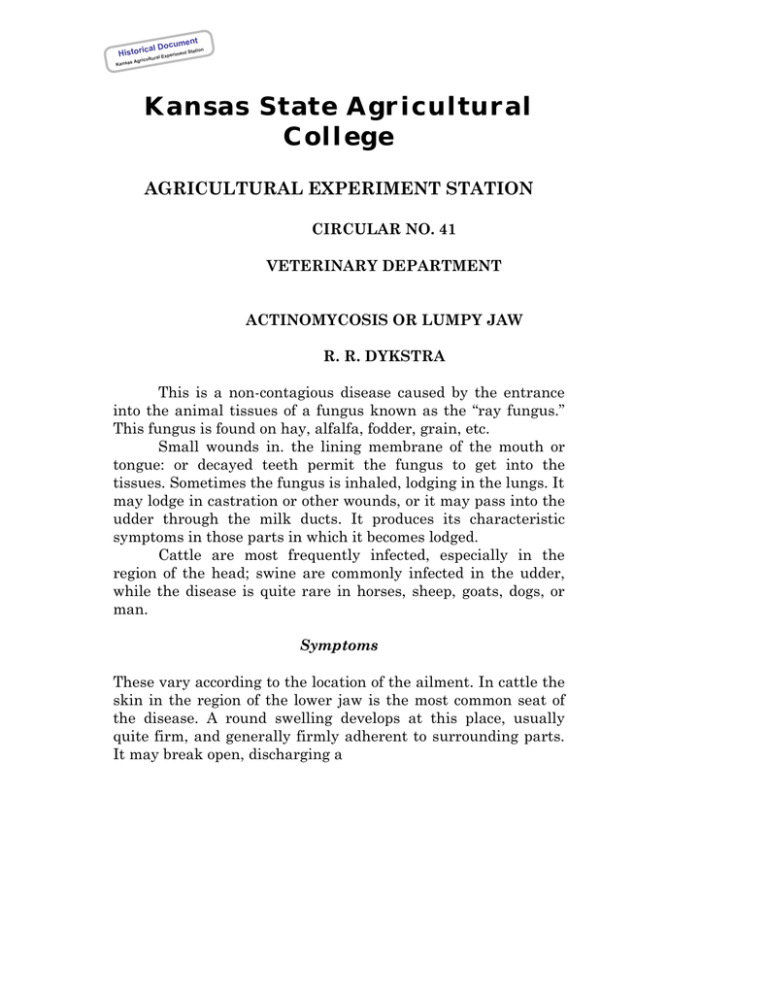
t cumen n io cal Do Histori tural Experiment Stat Kansas Agricul Kansas State Agricultural College AGRICULTURAL EXPERIMENT STATION CIRCULAR NO. 41 VETERINARY DEPARTMENT ACTINOMYCOSIS OR LUMPY JAW R. R. DYKSTRA This is a non-contagious disease caused by the entrance into the animal tissues of a fungus known as the “ray fungus.” This fungus is found on hay, alfalfa, fodder, grain, etc. Small wounds in. the lining membrane of the mouth or tongue: or decayed teeth permit the fungus to get into the tissues. Sometimes the fungus is inhaled, lodging in the lungs. It may lodge in castration or other wounds, or it may pass into the udder through the milk ducts. It produces its characteristic symptoms in those parts in which it becomes lodged. Cattle are most frequently infected, especially in the region of the head; swine are commonly infected in the udder, while the disease is quite rare in horses, sheep, goats, dogs, or man. Symptoms These vary according to the location of the ailment. In cattle the skin in the region of the lower jaw is the most common seat of the disease. A round swelling develops at this place, usually quite firm, and generally firmly adherent to surrounding parts. It may break open, discharging a t cumen cal Do Histori ultu as Agric n Statio riment ral Expe Kans 2 thick, yellow, sticky pus, the inside of the swelling becoming filled with raw, easily bleeding tissue. When the bone of the jaw is primarily involved it becomes much thickened, throwing out masses on its external surface, and frequently interfering seriously with mastication, so that the animal becomes unthrifty. Sometimes the lips are affected, becoming much thickened and hardened, or firm, round enlargements may be felt in their substance. Occasionally the tongue is the seat of the trouble, sores developing on its upper surface, especially towards the hind part of this organ. In the course of time the muscles of the tongue may become involved, causing a stiffening, the so called “wooden tongue,” which interferes with mastication, causes salivation, and produces a bad odor. The tip of the tongue, owing to its swollen condition, may be forced out of the mouth. Actinomycosis of the lungs is comparatively rare. The animal shows no characteristic symptoms to distinguish it from any other lung trouble. There is usually in the advanced stage difficult breathing, coughing, and the animal loses flesh. It may be distinguished from tuberculosis by the tuberculin test. The udder, when infected, becomes either uniformly hardened and may be enlarged, or small, round, hard masses may be felt in the interior. These latter are usually filled with thick pus. Prevention When large numbers of animals in a herd are affected it is advisable, if possible, to keep them away from low, swampy soil as grazing ground. A change of feed is desirable; or the same feed may be used if it is first steamed or scalded. Treatment The best line of treatment is to cut the growth out completely. This is easily accomplished when it is not firmly adherent to surrounding parts, or where it has not infiltrated neighboring structures. The wound thus produced should afterwards be washed out daily with a 2 per cent, watery solution of carbolic acid. t cumen n io cal Do Histori tural Experiment Stat Kansas Agricul 3 When the growth cannot be totally removed, it may be cut open, the pus washed out with a 2 per cent solution of carbolic acid and water, and the wound packed with a piece of cheesecloth that has been saturated with tincture of iodine. The gauze may be left in position for twenty-four or forty-eight hours. In those cases where the growth cannot be cut out, or if it does not contain pus, but is hard, a large cattle trocar and canula may be passed into the most prominent part of the enlargement until the center is reached. The trocar is then withdrawn, a piece of trioxide of arsenic the size of a bean is forced into the canula, and the latter withdrawn, leaving the arsenic in the tumor. In the course of from four to eight weeks the entire tumor drops out. When the tongue is affected, and in the early stages, several superficial incisions may be made in the surface, and afterwards painted with tincture of iodine. Finally, when the preceding forms of treatment cannot be carried out, the iodide of potash treatment may be adopted. It is as follows: Young animals should receive from one half to one dram of iodide of potash in the drinking water daily. Adult animals should receive from two to three drams daily. This treatment should be continued from four to six weeks, or until the growth has disappeared. If, during this treatment, the eyes commence to water, with an excessive nasal discharge, skin eruptions, loss of hair, and emaciation, then the dose must be decreased or discontinued for a week. This treatment is successful in about 75 per cent of all cases treated. The milk should not be used during this treatment, nor when the udder is the seat of the trouble.

